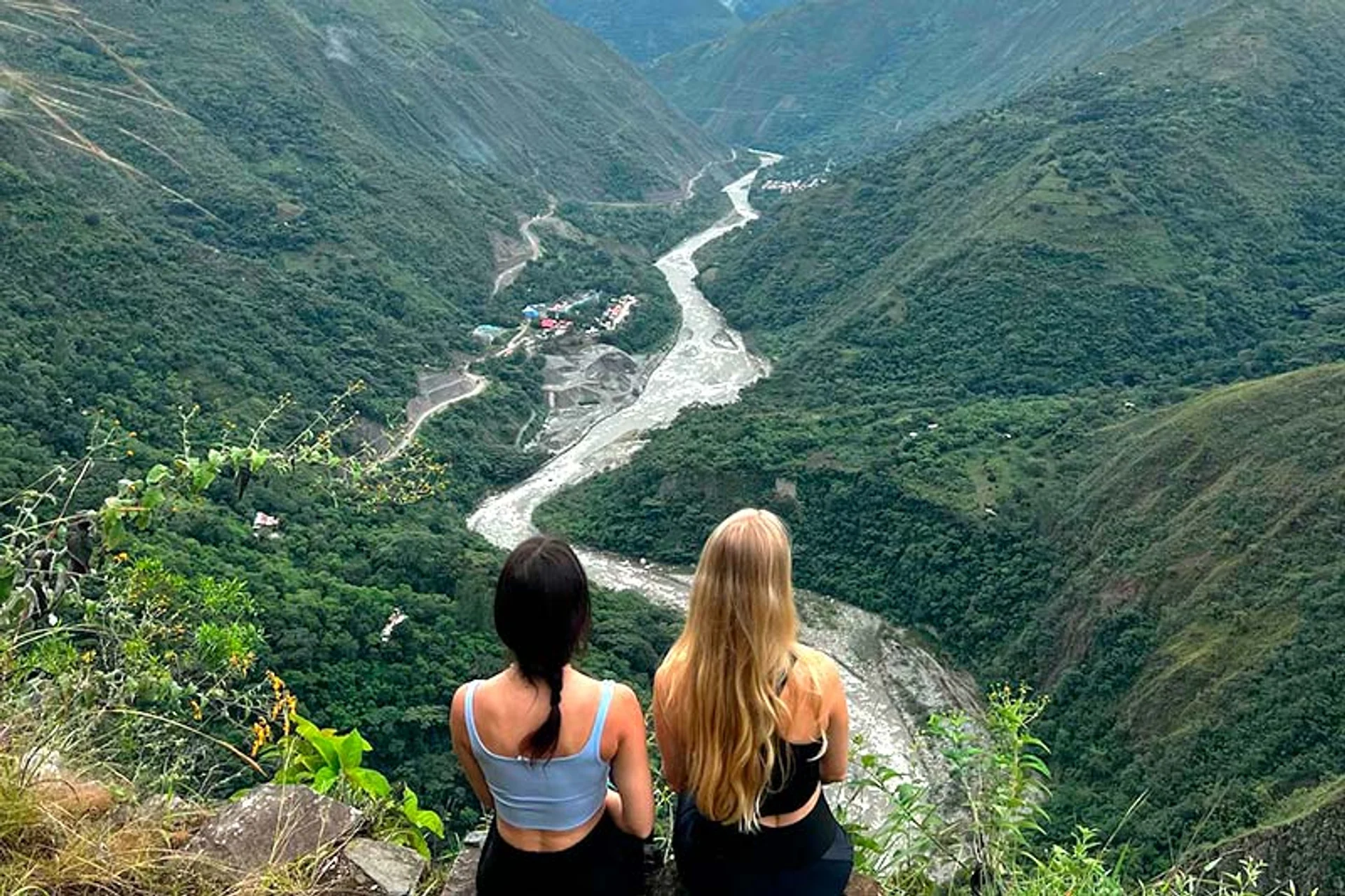Places to visit in Santa Teresa on your way to Machu Picchu
Santa Teresa is a town located on the route to Machu Picchu that has become a key point for those who want to enjoy a complete experience on their journey to the Inca citadel. This destination offers a combination of natural attractions, living history, and cultural experiences. In this article, we gather detailed information about each of the main attractions and activities available in Santa Teresa to help you plan a practical and enriching trip.
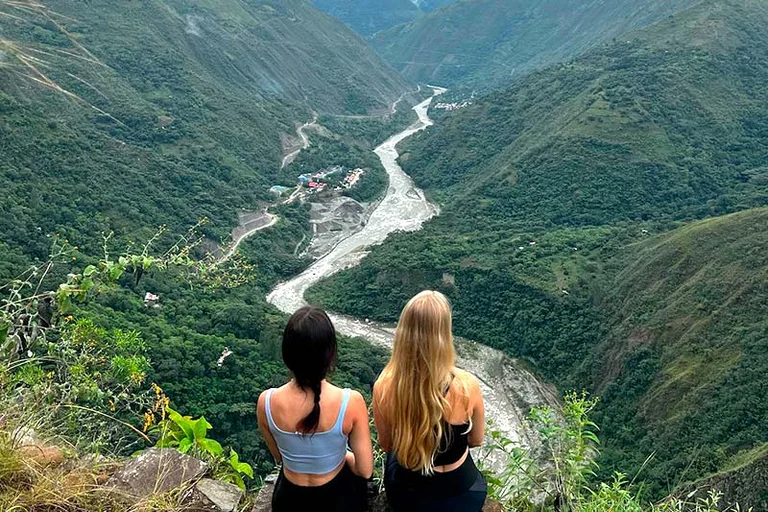
Content
- Cocalmayo Hot Springs
- Hiking Routes
- Viewpoints
- Cultural and Gastronomic Experiences
- Cultural Center
- Connection to Machu Picchu
- Recommendations for Your Trip to Santa Teresa
- Frequently Asked Questions
The Cocalmayo Hot Springs
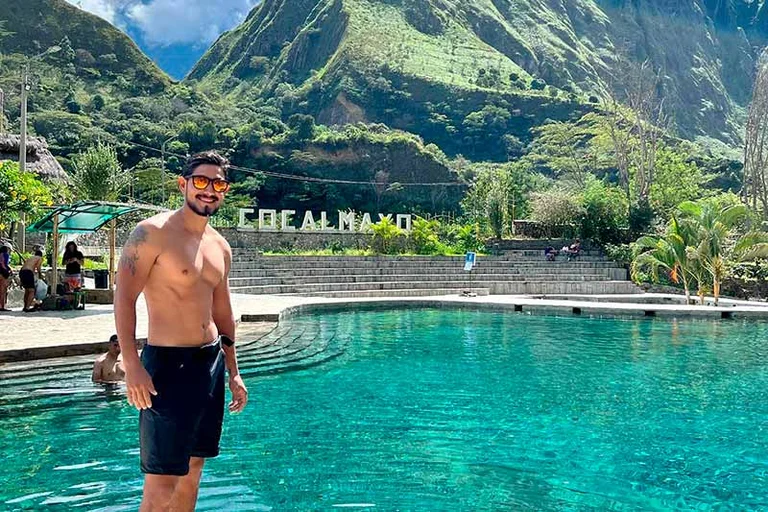
The Cocalmayo Hot Springs have become an attractive option for travelers heading to Machu Picchu. This place allows you to enjoy waters with healing and relaxing properties, blending into a natural environment that promotes disconnection and direct contact with biodiversity.
The inclusion of the Cocalmayo Hot Springs in the route to Machu Picchu enriches the traveler’s itinerary, offering a wellness break and an opportunity to reconnect with nature before facing the physical demands of the rest of the journey. This stop, less crowded than other alternatives, provides an authentic and unique experience.
Location: Strategically located just a few kilometers from Santa Teresa, the hot springs are set in an area full of forested landscapes and valleys.
Access: You can reach Cocalmayo via a short vehicle ride from Santa Teresa or even on foot for those who want to combine the experience with a hike.
Features:
- Temperature: The waters come from natural hot spring sources, with temperatures ranging between 36 and 40 °C. This temperature is ideal for a relaxing bathing experience.
- Environment: The surroundings of Cocalmayo are characterized by lush vegetation, which helps create a serene atmosphere conducive to meditation and relaxation.
- Traveler Experience: The combination of hot springs and a nearly untouched natural landscape makes this place an ideal option for those looking to balance physical activity with moments of relaxation and well-being in the heart of nature.
- Visitor Tips: It is recommended to bring personal items such as towels, swimsuits, sunscreen, and plenty of water, as the available services are basic and the experience is geared towards those who enjoy a natural setting without major urban interventions.
Travel to Santa Teresa with us
Through Carmachupicchu, you can book your trip to Machu Picchu via the Santa Teresa route, an option that invites you to enjoy a unique and authentic experience. By choosing this alternative, you not only access a planned journey that combines the charm of a car ride with the adventure of hiking through diverse natural landscapes, but you also opt for a more economical and sustainable option. Book your trip and discover a new way to reach one of the world’s most iconic destinations!
Hiking Trails
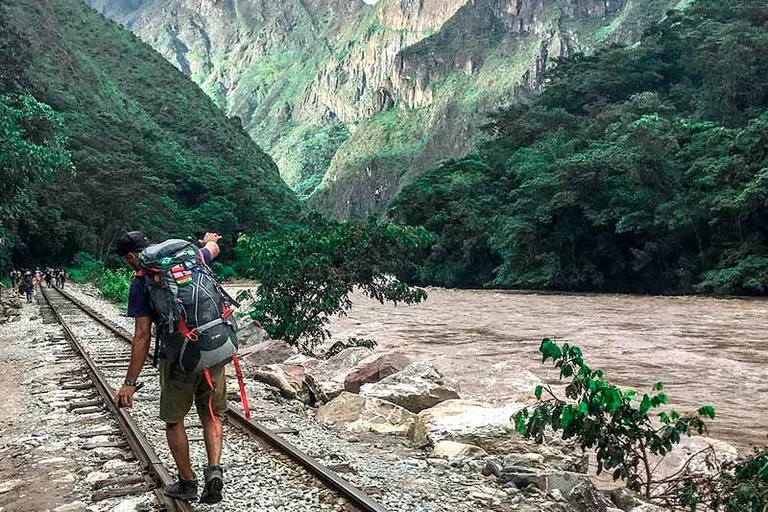
The geography of Santa Teresa is characterized by multiple trails and hiking routes that allow visitors to explore the area’s diverse flora. The available trails vary in distance and difficulty, offering options for both beginners and experienced hikers. This diversity allows for route adjustments according to physical ability and available time.
During the hikes, you can observe endemic species of the region and landscapes where you can witness the transition from valley to highlands. Stops at natural viewpoints facilitate the appreciation of panoramic views, ideal for photography and enjoying the surroundings.
Viewpoints
Santa Teresa offers several viewpoints that allow visitors to enjoy panoramic views of the region’s valleys and mountains. These viewpoints are designed to be accessible, with safe paths that make them suitable for families and people of all ages.
In addition to being rest stops, the viewpoints allow visitors to take a break and prepare for the next leg of the journey, taking advantage of the clear views and relaxation to enjoy the moment without distractions.
Cultural and Gastronomic Experiences
The Santa Teresa market is a gathering space where fresh products, handicrafts, and typical regional souvenirs are sold. In the market, you can find textiles, ceramics, kitchen utensils, and other products that reflect the craftsmanship of the local inhabitants. Each item is the result of traditional techniques passed down from generation to generation.
The presence of local vendors allows visitors to learn in detail about the origin and production of each product, enriching their experience by learning about local culture and economy. Alongside the artisanal offerings, the market has food stalls where traditional dishes prepared with local ingredients can be enjoyed, reinforcing the connection between culture and gastronomy.
Cultural Center
The cultural offerings in Santa Teresa extend to centers and spaces dedicated to promoting local art and traditions. These places organize exhibitions, workshops, and events that showcase the area’s cultural diversity.
Cultural centers have an activity schedule that is periodically updated, allowing visitors to access contemporary art exhibitions, historical displays, and folk events. These activities are not only recreational but also serve an educational purpose, preserving and spreading Andean traditions and the cultural heritage of Santa Teresa.
Connection to Machu Picchu
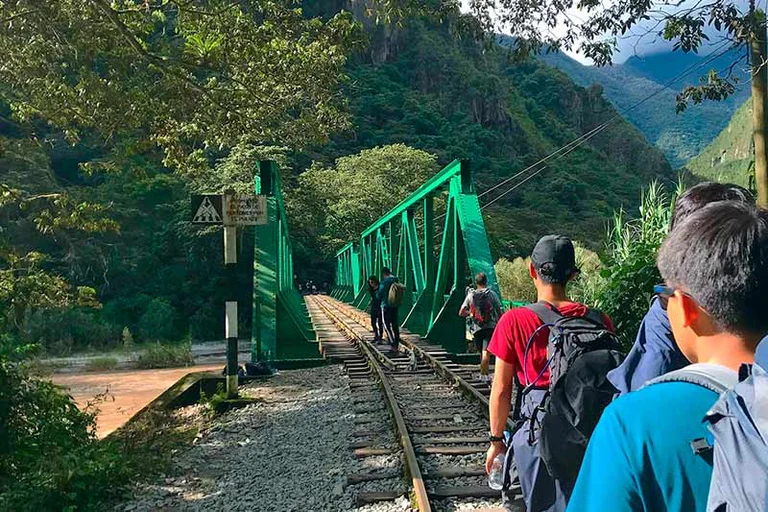
The strategic location of Santa Teresa makes it an ideal stop to organize the final stretch of the journey to Machu Picchu via the complete route from Hidroeléctrica to Aguas Calientes. This connection stands out for combining convenience with the opportunity to enjoy less-traveled landscapes. Below is how you can take advantage of this route:
-
Segment from Santa Teresa to Hidroeléctrica
Land transport: From Santa Teresa, public and private transport services such as minibuses or taxis directly connect to the Hidroeléctrica station. This journey, which takes approximately 30 minutes, allows travelers to enjoy panoramic views of the native vegetation, offering a preview of the landscape they will experience in the final stretch. -
Segment from Hidroeléctrica to Aguas Calientes
Hiking: From Hidroeléctrica, travelers have the option of hiking to Aguas Calientes, a highly valued alternative for those seeking an immersive experience in the Andean natural environment. This hike, which usually takes between 2 and 3 hours, allows travelers to immerse themselves in a diverse and authentic landscape, where vegetation and wildlife are at their best. This option offers a more economical and nature-connected alternative, making the final stretch to Aguas Calientes an essential part of the journey to Machu Picchu. -
Segment from Aguas Calientes to Machu Picchu
Bus transport: Once in Aguas Calientes, the connection to Machu Picchu is made via a bus service that operates frequently and is coordinated with visitors’ arrival. This segment takes approximately 25 to 30 minutes and is designed to facilitate access to the Machu Picchu archaeological complex. The bus provides a comfortable and safe journey, allowing travelers to focus on the cultural and historical experience awaiting them. Additionally, this service helps preserve the natural environment as it is an eco-friendly bus.
Discover Santa Teresa
In recent years, Santa Teresa has stood out as a model of sustainable tourism. This destination has promoted various ecotourism and community tourism projects, where the locals themselves offer authentic experiences. These initiatives allow visitors to immerse themselves directly in the culture, promoting the local economy and preserving the cultural identity and natural environment of the region. This approach not only enriches the traveler’s experience but also sets a positive trend in the way tourism develops in areas near Machu Picchu.
Recommendations for Your Trip to Santa Teresa
- Hire Our Transportation and Guide Service: The transportation service will ensure your itinerary runs smoothly, and an expert guide will provide historical and cultural information about each site, enriching your experience and ensuring a safe journey.
- Explore the Cocalmayo Hot Springs: Visit the local Cocalmayo hot springs to enjoy a moment of relaxation before your visit to Machu Picchu.
- Enjoy Nature: Hike along the trails and viewpoints that Santa Teresa offers. These routes allow you to appreciate biodiversity and authentic landscapes, perfect for photography and relaxation in nature.
- Experience Local Culture: Visit markets and cultural centers to get a closer look at the community’s crafts, gastronomy, and traditions.
- Prepare Your Gear: Bring suitable footwear, comfortable clothing (for both cold and sun protection), sunscreen, and plenty of water.
- Check the Weather: Look up the weather forecast before you head out, as conditions can change quickly in the area.
- Respect the Environment and Local Customs: Follow conservation guidelines at each site, avoid littering, and respect the cultural and natural traditions of the community.
